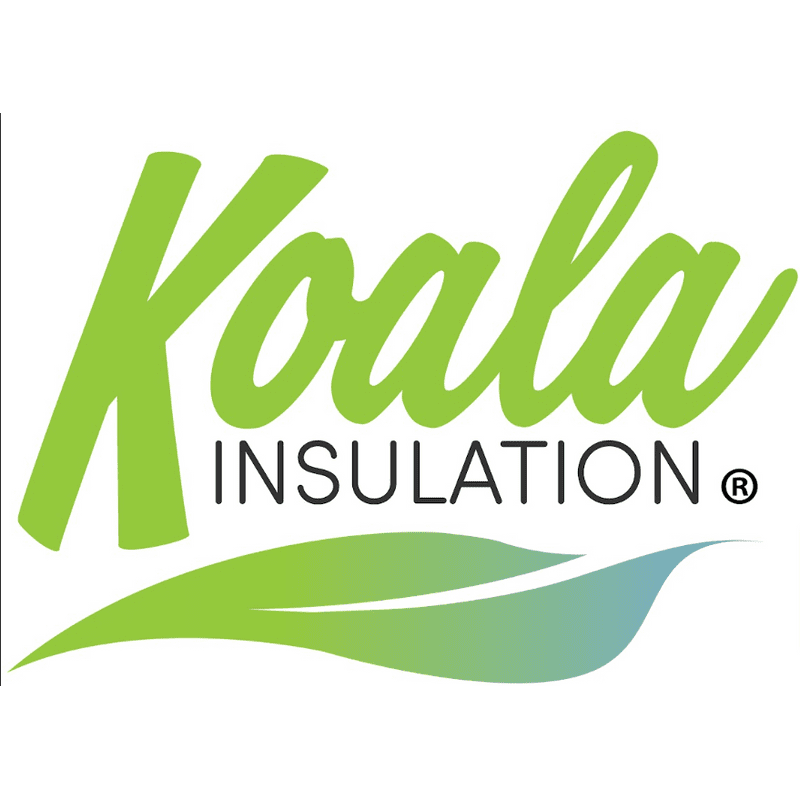Can Insulation be Installed in Historic Homes

Insulation is crucial for enhancing energy efficiency, reducing costs, and ensuring comfort in homes. However, historic homes present unique challenges when it comes to installing insulation. These challenges include preserving architectural integrity, adhering to preservation guidelines, and addressing structural limitations and potential risks.
This article aims to explore whether insulation can be installed in historic homes without compromising their historical value. It will delve into the importance of insulation, the specific challenges associated with historic properties, suitable insulation types, and best practices for installation. By the end, readers will understand the balance required between energy efficiency and historical preservation.
Understanding the Importance of Insulation in Historic Homes
Insulation plays a crucial role in maintaining comfortable temperatures and reducing energy costs in homes, regardless of their age. However, this is especially important in historic homes, which often have less efficient building materials and design compared to modern constructions.
Historic homes are typically not designed with insulation in mind, as it was not a common practice during their time of construction. As a result, these properties tend to lack proper insulation or have outdated insulation that has degraded over time.
Installing insulation in historic homes can help improve thermal performance, reduce energy costs, and increase overall comfort for occupants. It can also prevent damage from moisture and mold build-up caused by temperature fluctuations.
Moreover, adding insulation to older homes can also help preserve their original features and materials. By reducing the need for heating and cooling, insulation can prevent excessive wear and tear on historic building elements such as woodwork, plaster, and paint.
In short, installing insulation in historic homes is not only beneficial for energy efficiency but also essential for preserving the structural integrity of these important historical properties.
Can Insulation be Installed in Historic Homes?
The short answer is yes, insulation can be installed in historic homes. However, it must be done carefully and with consideration for the unique challenges these properties present. For instance, many older homes were not built with insulation in mind, and therefore may have structural limitations that make installation difficult. Additionally, historic properties are often subject to preservation guidelines that restrict changes to their exterior appearance.
Additionally, professional preservationists and historians must be consulted before any insulation installation takes place in a historic home. They can assess the property’s historical significance and determine the best course of action to preserve its value while still achieving energy efficiency goals.
Furthermore, it is essential to use insulation materials and methods that are sympathetic to the property’s age and design. This can include using natural or environmentally friendly materials such as wool, cellulose, or recycled denim, as well as taking care to install them in a way that does not damage original materials.
What are the Challenges in Installing Insulation in Historic Homes
Historic homes differ from modern buildings in terms of construction techniques, materials used, and architectural styles. These differences pose unique challenges when it comes to installing insulation without affecting the historical value of the property.
Preserving Architectural Integrity
One of the primary concerns when installing insulation in historic homes is preserving the architectural integrity. Historic properties often have unique features and designs that contribute to their character and historical significance. Any changes made to these features can significantly impact the overall appearance and value of the property.
Adhering to Preservation Guidelines
Many historic homes are subject to preservation guidelines set by local, state, or national organizations. These guidelines aim to protect the original architecture and materials of historic properties. As a result, they may restrict certain types of insulation or installation methods that could alter the appearance or structural integrity of the home.
Addressing Structural Limitations
Another challenge with installing insulation in historic homes is addressing structural limitations. Many older properties were not designed with insulation in mind, and therefore may have limited space or structural issues that make installation difficult. This can require creative solutions and careful planning to ensure the insulation does not compromise the structural integrity of the home.
Managing Potential Risks
When installing insulation in historic homes, there is a potential risk of damaging historical materials or causing unintended consequences. For example, using certain types of insulation can trap moisture and lead to mold growth, which can damage wood and plaster. Additionally, improper installation techniques can impact the structural stability of the building.
These challenges highlight the importance of consulting with professionals and following best practices when installing insulation in historic homes.
Suitable Insulation Types for Historic Homes
When choosing insulation for historic homes, it is essential to consider factors such as preservation guidelines, structural limitations, and potential risks. The following are some suitable insulation types that can meet these criteria.
Spray Foam Insulation
Spray foam insulation is a popular choice for historic homes because it can be applied without altering the home’s exterior appearance. It also has excellent insulating properties and helps prevent air infiltration, making it an energy-efficient option.
Cellulose Insulation
Cellulose insulation is made from recycled paper materials and can be blown into small spaces, making it suitable for older homes with limited space. It is also a relatively safe and eco-friendly option, making it a good choice for preserving historical materials.
Aerogel Insulation
Aerogel insulation is a newer type of insulation that offers superior thermal performance while being thin and lightweight. This makes it an excellent option for historic homes with structural limitations or preservation guidelines that restrict thicker insulation materials.
These types of insulation can be installed with minimal impact on the historical integrity of a property and provide significant energy efficiency benefits. However, it is essential to consult with professionals and follow preservation guidelines to ensure the insulation installation is done correctly.
Cost Comparison of Different Insulation Types
When it comes to insulation, cost is always a significant factor to consider. The cost of installing insulation in a historic home can vary depending on factors such as the type of insulation, installation method, and the size and layout of the property. In general, spray foam insulation tends to be the most expensive option due to its superior insulating properties and professional installation costs.
Cellulose insulation and aerogel insulation are more cost-effective options, with cellulose being relatively affordable due to its recycled materials and aerogel offering long-term energy savings that can offset its initial higher cost. However, it is essential to remember that the cost should not be the only consideration when choosing insulation for a historic home.
Preservation of the property’s historical value and long-term energy efficiency should also be taken into account. Ultimately, consulting with experts and considering all factors can help determine the most suitable and cost-effective insulation option for a historic home.
Best Practices for Insulation Installation in Historic Homes
To ensure that insulation installation does not compromise the historical value of a property, it is crucial to follow best practices. These include:
- Consulting with professionals: As mentioned earlier, professional preservationists and historians should be consulted before any insulation installation takes place. They can provide expert advice on preserving the home’s historical value while achieving energy efficiency goals.
- Conducting thorough research: Before selecting a particular type of insulation or installation method, thoroughly research its potential impact on the property’s structure and appearance. Consider consulting with multiple experts to get different perspectives.
- Implementing preservation-friendly techniques: Certain insulation installation techniques, such as using small holes or carefully removing and replacing original materials, can help preserve a historic home’s architectural integrity.
- Using compatible materials: When selecting insulation materials, choose options that are compatible with the existing building materials. Avoid using modern materials that may not be appropriate for a historic property.
What Additional Energy Efficiency Upgrades Can Increase Your Home’s Performance?
In addition to insulation, there are several other energy efficiency upgrades that can significantly improve a historic home’s performance. These include:
- Upgrading windows and doors: Replacing old, drafty windows and doors with energy-efficient options can reduce air infiltration and increase insulation in these areas.
- Installing a programmable thermostat: A programmable thermostat allows for more precise control of heating and cooling, leading to potential energy savings.
- Sealing air leaks: Air leaks around windows, doors, or other openings in the building envelope can contribute to energy loss. Sealing these gaps with caulking or weather stripping can improve energy efficiency.
- Upgrading lighting: Switching to LED bulbs can save significant amounts of energy and reduce the need for frequent bulb replacements.
These upgrades, combined with proper insulation installation, can significantly improve a historic home’s energy efficiency without compromising its historical value.
How to Choose the Right Professional for Insulation Installation?
When it comes to insulation installation in historic homes, it is crucial to choose the right professionals for the job. Here are some tips to help you make an informed decision:
- Research their experience: Look for contractors or companies with experience in working with historic properties and have a track record of successful insulation installations.
- Check for certifications and licenses: Make sure the professional has the necessary certifications and licenses to perform insulation installation in your area.
- Read reviews and ask for references: Reading reviews from previous customers can give you insights into their work quality. Additionally, ask for references from past projects similar to yours.
- Ask about preservation knowledge: Since historic homes require specific preservation techniques, ensure that the professional has knowledge and experience in working with these types of properties.
- Get multiple quotes: Consider getting quotes from multiple professionals to compare prices and services offered.
By following these tips, you can select a qualified and knowledgeable professional who can help preserve your historic home’s integrity while improving its energy efficiency.
Choose Koala Insulation For A More Efficient and Comfortable Home
Koala Insulation of North Chicagoland is your go-to expert for all insulation installation needs in historic homes. Our team has extensive experience and knowledge working with these unique properties and can provide top-notch services to improve energy efficiency without compromising the historical value.
We offer a range of insulation options, including blown-in attic insulation, spray foam insulation, and batt insulation installation and many more. Our services not only increase energy efficiency but also provide additional benefits such as improved home comfort, lower energy bills, reduced outside noise, and eco-friendliness.
Contact us today through our website or call us at (847) 470-3177 to schedule a free insulation evaluation and get a quote for your project.
We serve the greater North Chicago area including Arlington Heights, Rolling Meadows, Mount Prospect, Palatine, Schaumburg and many more.
FAQs
Can batt insulation be used in the walls of historic homes?
Yes, batt insulation, such as fiberglass batts, can be carefully installed in the walls of historic homes to improve thermal efficiency. It’s important to choose the appropriate wall insulation that does not affect the breathability of traditionally constructed insulate walls and to consider adding a vapor barrier to prevent moisture issues.
Is it appropriate to use closed cell spray foam in historic homes?
Closed cell spray foam can be used in historic homes, particularly in crawl spaces and floor joists where it can help prevent the intrusion of cold air and warm air. However, it should be applied cautiously to ensure it does not compromise the structural elements or historical integrity of the building.
How can I insulate the attic flooring in a historic home without causing damage?
Insulating the attic flooring in a historic home can be done effectively with loose fill insulation or batt insulation. These materials can be installed between the attic floor joists without altering the existing structures or finishes. Care should be taken to ensure proper ventilation to prevent any moisture buildup.
What considerations should be made for adding exterior insulation to historic homes?
When adding exterior insulation to historic homes, it is crucial to choose materials and methods that do not alter or damage the original building fabric. Options like appropriate insulation boards that can be applied externally and finished to match the existing exterior can be considered. It’s also important to ensure that any added insulation allows the building to breathe to avoid trapping moisture.
Conclusion
Insulation installation in historic homes requires a delicate balance between preserving the property’s historical value and achieving energy efficiency goals. By following best practices, conducting thorough research, and choosing the right professionals for the job, you can successfully improve your historic home’s energy efficiency without compromising its integrity.
And when it comes to insulation installation, trust Koala Insulation of North Chicagoland for high-quality services and excellent customer satisfaction. Contact us today to find out how we can help make your home more energy-efficient and comfortable.
Find Your Location


Get a quote



